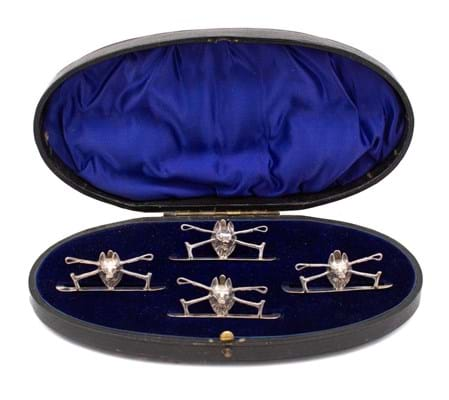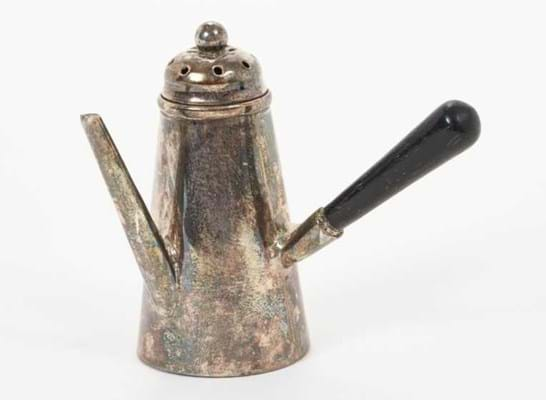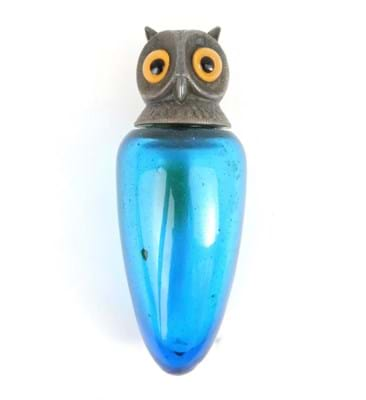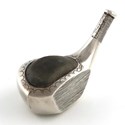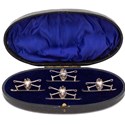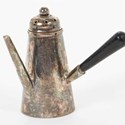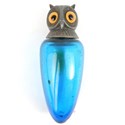The buyer's guide to antique silver novelty items
While grand and elaborate pieces of silver became an essential part of 18th and 19th century dining culture, at the same time, smaller silver novelty items began to emerge as the Victorians acquired a taste for humorous or whimsical pieces.
Three-piece toad form cruet by Richard Comyns, London 1967 - £1100 at Chorley’s, Cheltenham, July 2022.
These collectable pieces of ‘smallwork’ remain as charming today as they did when they were first made. They make lovely gifts and can have personal connections to their owner which adds to their appeal.
A wide variety of these silver novelties are available to buy at auctions on the-saleroom.com.
Quirky and lively
Silver novelty items really came into their own thanks to the culture of formal dining during the Victorian period.
Aristocratic and upper middle-class families in Victorian Britain enjoyed surprising their guests with silver novelties such as a pepper pot shaped as an owl or a sugar box fashioned as a scallop shell.
Many people also carried small items on their person like novelty vesta cases for keeping matches, silver snuff boxes, cases for visiting cards or vinaigrettes containing smelling salts.
Such items now form a lively collecting area of the antiques market and these objects are worth much more than the weight of the metal. The fact that they tend to be portable items as well means they make the perfect modern collectable – not taking up too much space in your living room while providing a talking point and evoking a sense of social history.
The market for these items has held up well compared to more typical pieces of functional domestic silver – which means they can also make a good investment.
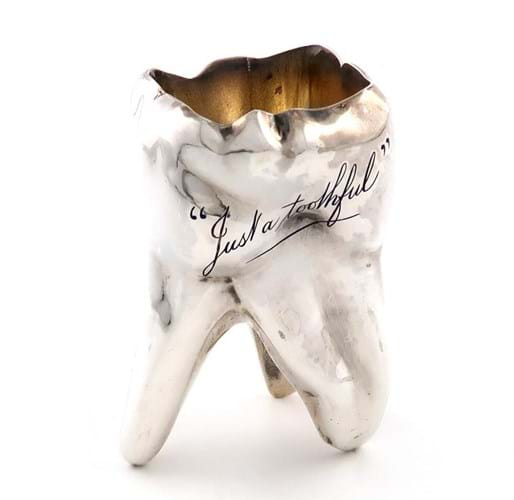
Victorian silver and enamel table shot holder modelled as a molar tooth by Louis Dee, London 1881 - £2000 at Woolley & Wallis, Salisbury, July 2022.
What to look for
Look out for the silver hallmarks on these items which identify the date and location where the item was originally stamped to confirm the purity of the silver. Also keep an eye out for a maker’s mark indicating who produced it.
Popular silversmiths include Sampson Mordan (1790-1843), whose company S Mordan & Co produced many writing and stationery implements (Mordan co-invented the propelling pencil) but who also made novelty versions of standard period forms like card holders, scent bottles, vinaigrettes, cigar cases and nutmeg graters.
Henry William Dee was another Victorian maker who produced an array of novelties from needle cases to scissors to travelling corkscrews, while Scottish silversmith Alexander Crichton produced a famous set of fantastical animal claret jugs as did fellow maker Richard Hood & Son.
Collectors tend to look for items that provide the most amusement for the table and will prioritise objects that are ‘of the period’. Genuine works dating from the 19th century are therefore deemed much more desirable than later interpretations of these antiques.
Rarity plays a key factor in determining value and therefore unusual designs, patterns or makers can help an item fetch more at auction.
What to do next
Decide how much you’d like to spend and use the search facility on thesaleroom.com to find silver novelties coming up for sale. You can filter your search by, among other things, price and by location of the auction house to narrow down your selection.
To research recent prices at auction to see how much different silver items sold for you can also try out the Price Guide.
If you are new to bidding check out our guides to buying at auction – it’s easy once you know how.


